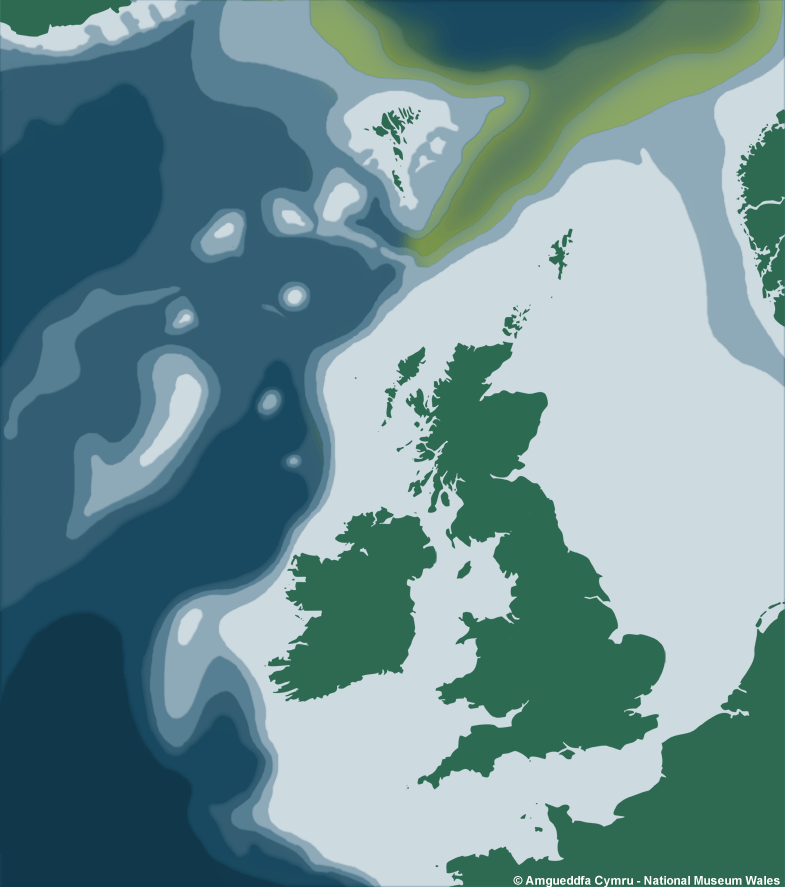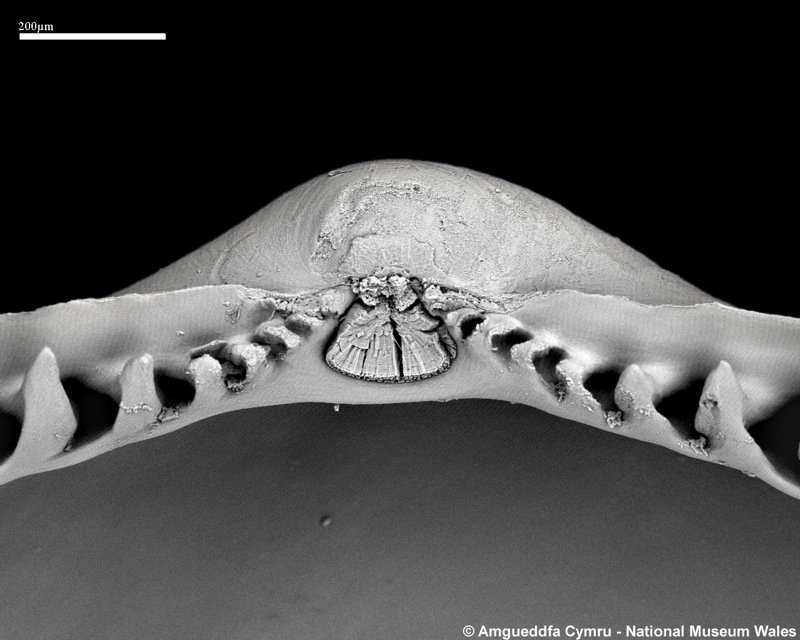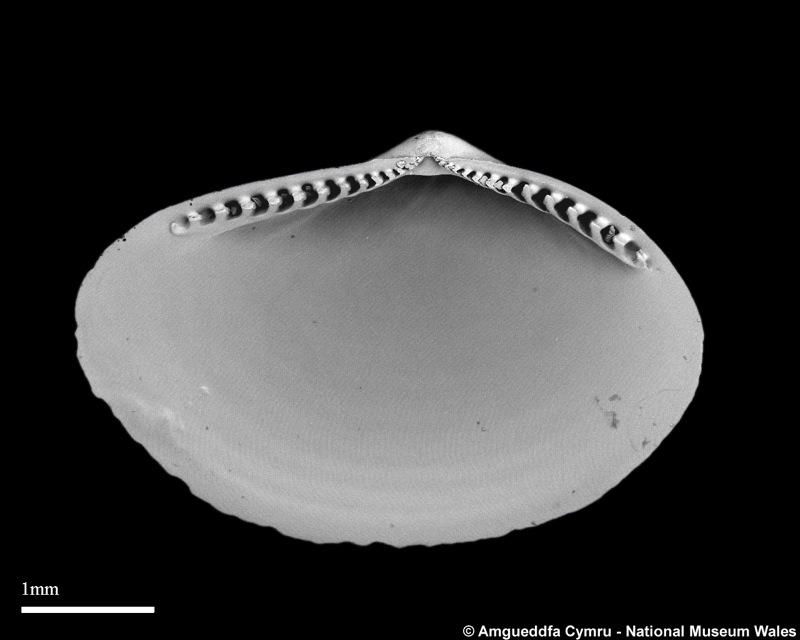Yoldiella propinqua (Leche, 1878)
Nuculanoidea : Nuculanidae |
| Tebble name: | n/a |
| Smith & Heppell name: | Yoldiella propinqua (Leche, 1878) |
Notes on Nomenclature
Killeen & Turner (2009) use Nuculanidae instead of Yoldiidae in agreement with Ockelmann & Warén (1998) who explan that the distinguishing characters between these two families has never been well documented. Until the Yoldiidae can be clearly distinguished from the Nuculanidae we shall treat them under the single family Nuculanidae.
To size:
To 5.5mm.
Shell Structure:
Larger specimens relatively solid but smaller individuals moderately thin and fragile.
Equivalve:
Equivalve.
Equilateral:
Slightly inequilateral, beaks just in front of midline. Becomes more inequilateral with growth.
Tumidity:
Moderately tumid.
Outline:
Oval, occasionally sub-rostrate in larger specimens; antero-dorsal margin short, gently sloping; anterior margin rounded to narrowly rounded; postero-dorsal margin long, slightly curved, gently sloping; lower posterior margin obliquely truncated and slightly indented (rostrate in larger specimens); ventral margin deeply rounded. Umbo relatively prominent, broad, rounded, projecting well above the dorsal margin, anterior of midline.
Sculpture:
Virtually smooth with only very faint, closely spaced concentric lines.
Margin:
Smooth.
Ligament:
Amphidetic, with the ligament seated within a socket below the beak in a triangular formed resilifer.
Hinge:
Taxodont: Hinge plate broad, continuous with 12-13 chevron shaped teeth, which are drawn up into points, on either side of the ligament.
Periostracum:
Glossy, straw coloured.
Colour:
Translucent white.
Additional Characters:
The hind-gut forms a simple, rounded loop on the right side of the body.
Distribution & Ecology
Widespread in the north Atlantic and Arctic (possibly circumpolar) occurring from west Greenland to Norway and the Kara Sea and east to the Laptev Sea. Around the Faroes it is found in depths from 402-1098m
Depth Range
Continental Margin Zone (200 - 500m)
Bathyal (500 - 2000m)

Additional Information & Related Species
Related Species
Nuculanoidea : Nuculanidae
References
Listed are literature citing Yoldiella propinqua (Leche, 1878). Reference containing the species Type Description is highlighted.
|
Allen, J.A., Sanders, H.L. & Hannah, F. 1995. Studies on the deep-sea Protobranchia (Bivalvia); the subfamily Yoldiellinae. Bulletin of the British Museum of Natural History. 61: 11-90. |
|
Killeen I.J. & Turner J. 2009. Yoldiella and Portlandia (Bivalvia) from the Faroe-Shetland Channel and Rockall Trough, Northeast Atlantic. Journal of Conchology. 39 (6): 733-778. |
|
Leche W 1878. Öfversigt öfver de av svenska expeditionerna till Novaya Semlja och Jenissei 1875 och 1876 insamlade hafsmollusker. Kungliga Svenska Vetenskaps-Akademiens Handlingar, N.F.. 10: 1-86. |
Resources
- Conchological Society
of Great Britain & Ireland
Provides resources for understanding, identifying, recording, and conserving molluscs - CLEMAM
Check List of European Marine Mollusca - MarLIN
The Marine Life Information Network for Britain and Ireland (MarLIN) provides information for marine environmental management, protection and education. It is a centre of excellence in spatially based and time-series marine biological information and supports good stewardship in the marine environment. - NBN Gateway
National Biodiversity Network's Gateway. Use it to explore UK biodiversity data, as contributed by participating data providers. - BivAToL
- MarBEF
- Malacological Society
- Unitas Malacologica
- Census of Marine Life
- MarBEF
MarBEF, a network of excellence funded by the European Union and consisting of 94 European marine institutes, is a platform to integrate and disseminate knowledge and expertise on marine biodiversity, with links to researchers, industry, stakeholders and the general public.





















